Cave Team and West Valley SAR Successfuly Complete Reaccreditation
 Tuesday, March 6, 2018 at 16:59
Tuesday, March 6, 2018 at 16:59  Jeff Lehman
Jeff Lehman 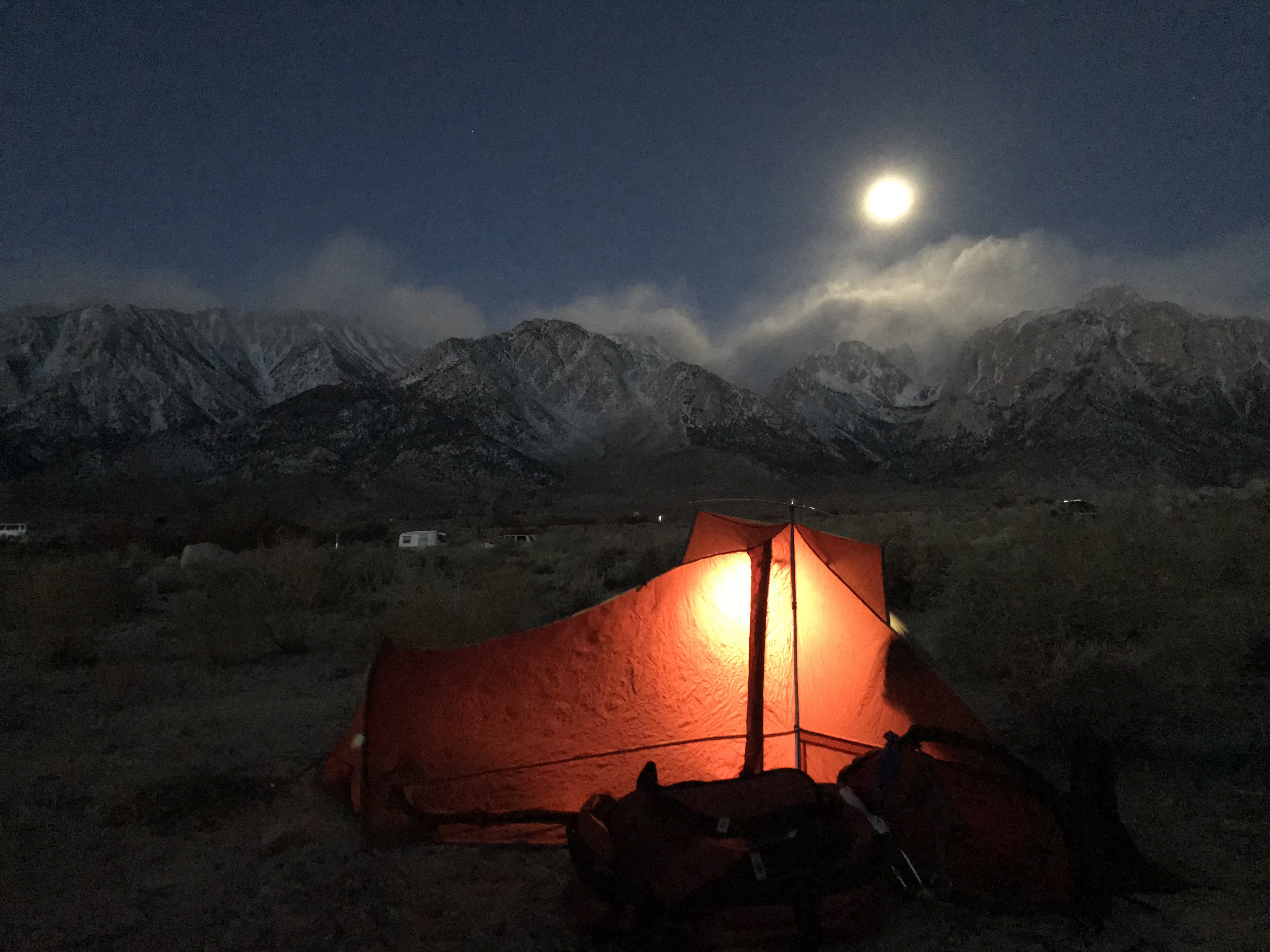 Once a year the teams of the California Region of the Mountain Rescue Association meet to complete a reaccreditaion in one of three disciplines. This year was the technical rock test, and it was held in the Alabama Hills near Lone Pine CA. Rain, wind, and a possibility of snow were in the forecast for the weekend, but as the date approached, the weather eased a bit. No rain or snow, but plenty of wind.
Once a year the teams of the California Region of the Mountain Rescue Association meet to complete a reaccreditaion in one of three disciplines. This year was the technical rock test, and it was held in the Alabama Hills near Lone Pine CA. Rain, wind, and a possibility of snow were in the forecast for the weekend, but as the date approached, the weather eased a bit. No rain or snow, but plenty of wind.
Each team must contribute a patient and two evaluators. The evaluators must have more than 5 years of experience, be a recognized leader on the team, and complete an online evaluator certification. Before the general briefing there is a team leader briefing, and a briefing for the patients. After the general briefing, each team is introduced to their evaluators and given a map to their test location.
Each team must quickly reach their subject, assess their condition, and evacuate them to definitive care. Teams are evaluated on a variety of criteria. Some examples are: timeliness, safety, technical proficiency, medical care, and leadership.
While these evaluations can be a bit nerve wracking, I have come to enjoy them. My team grows and strengthens every time it is tested, and I get to continue relationships with fellow teams from accross the state.
West Valley SAR and the Cave Rescue Team successfully completed their reaccreditation in technical rope rescue this year. Both of these teams are fully accredited with the MRA. Wrightwood SAR is accredited in search management, and SB Mountain SAR is progressing toward an accreditation with the MRA.

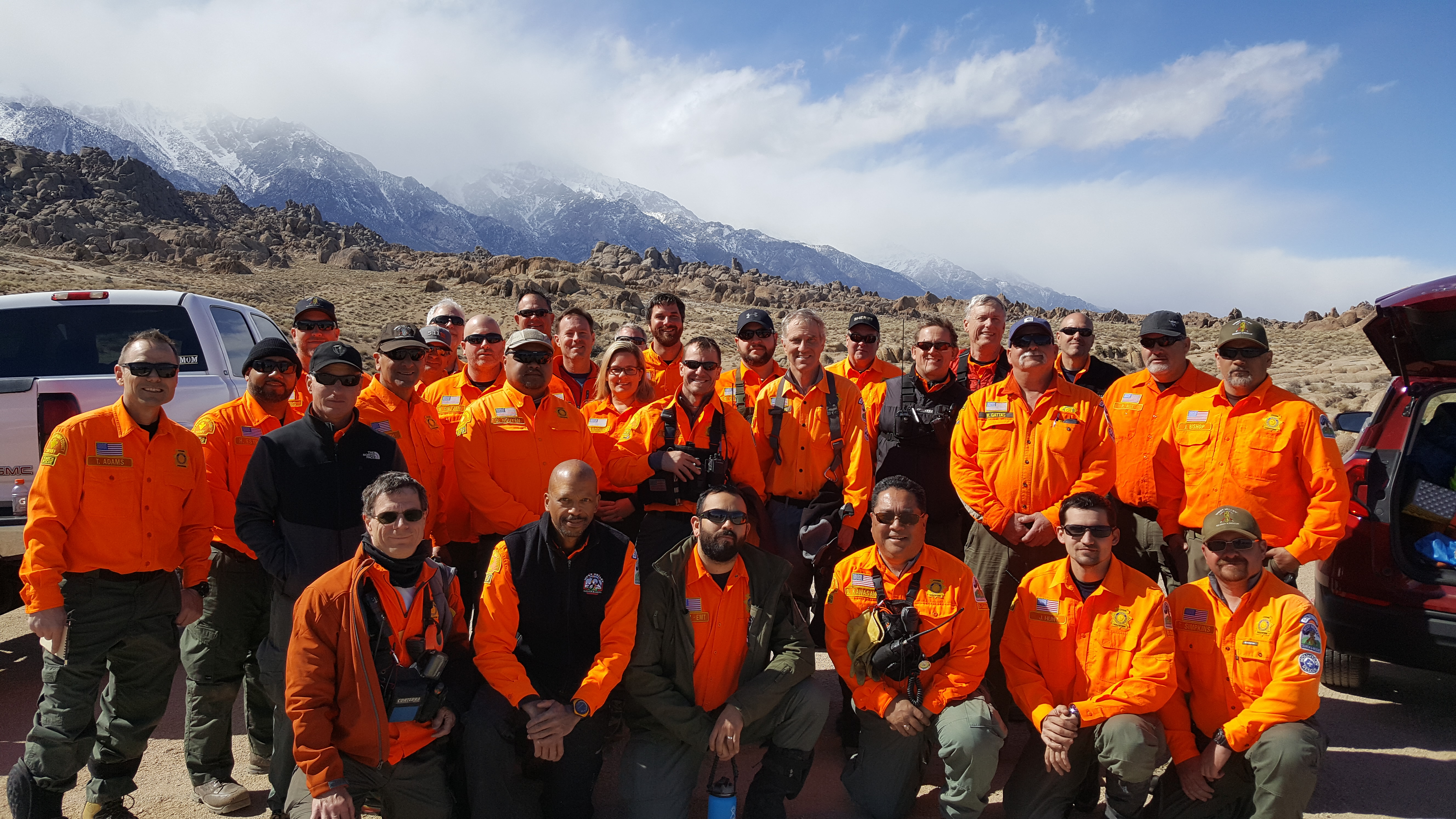
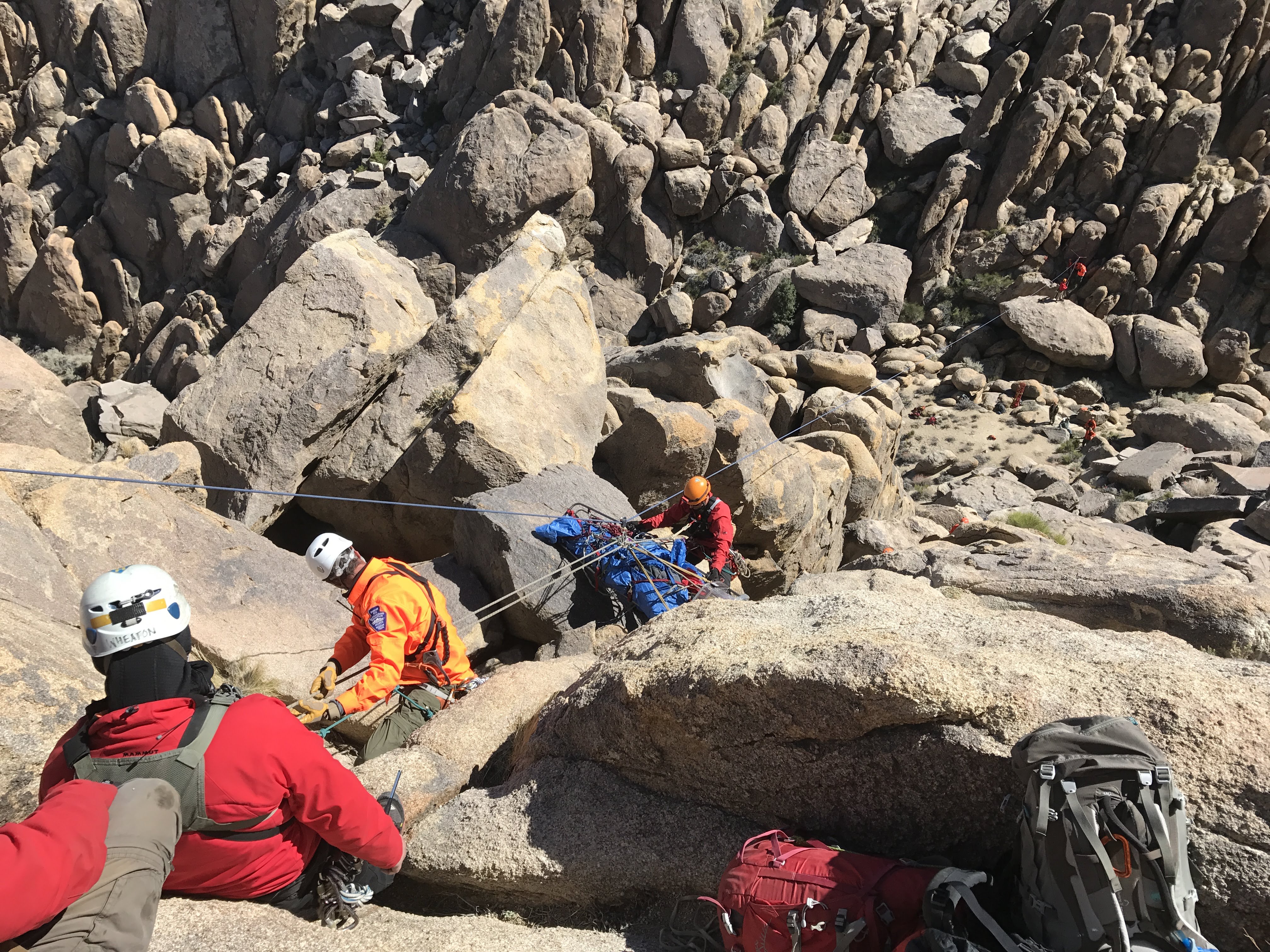
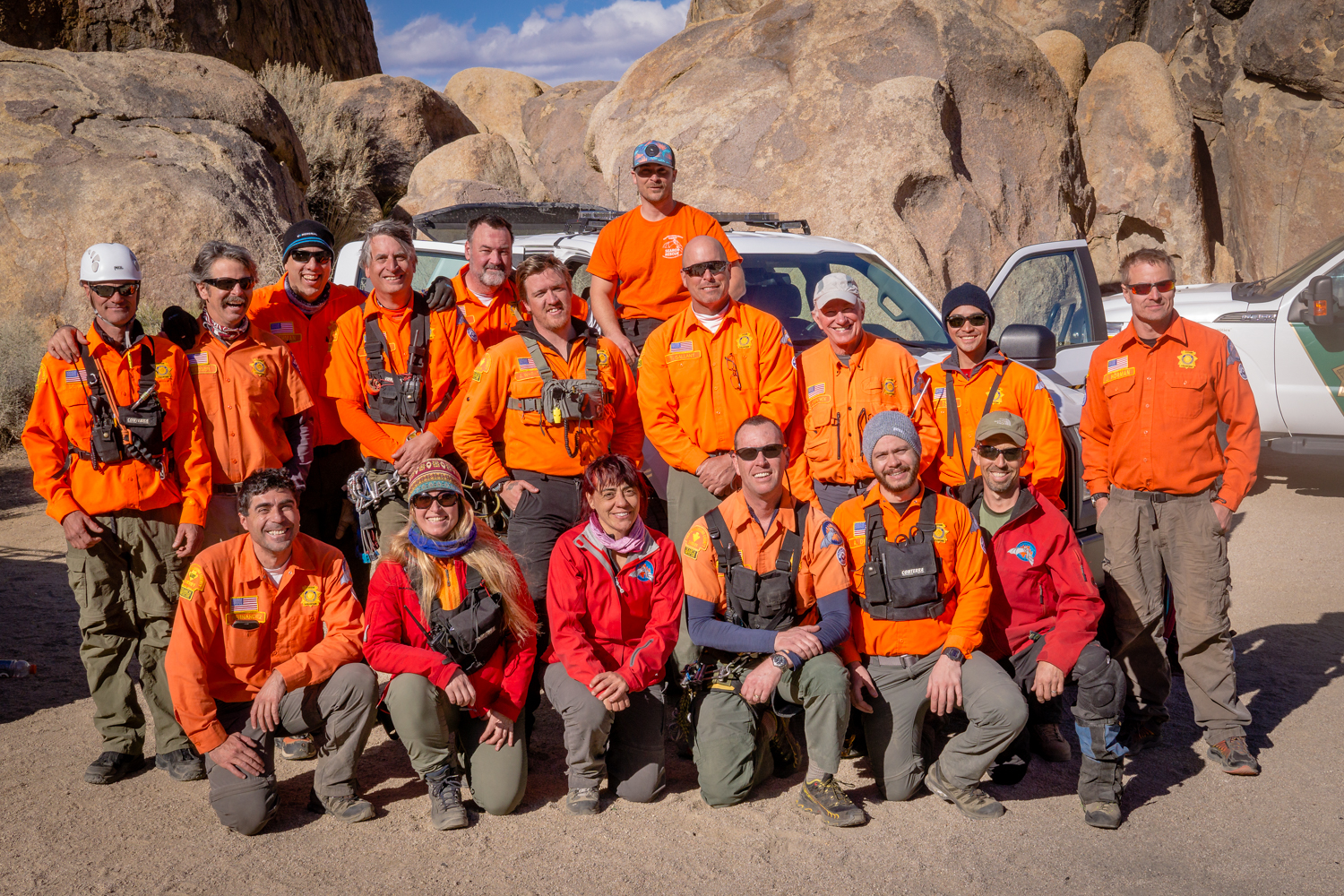
 MRA,
MRA,  Technical Rope in
Technical Rope in  News
News Autoblock Self-Belay
 Monday, February 26, 2018 at 8:30
Monday, February 26, 2018 at 8:30  Sonny Lawrence
Sonny Lawrence This is a discussion concerning the use of self-belay while on rappel with an autoblock.
It should be noted that all self-belays have some trade off of one sort or another. None are perfect. All must be used with caution. No belay of any sort should be used while rappelling in a significant amount of moving water. In this situation the forces on the body can be huge, resulting in a catastrophe, that is; death. An autoblock self-belay is a particular style of self-belay wherein the belay device is below the rappel device. By having it in this position, it mitigates some of the disadvantages of having the belay device above the rappel device.
The nomenclature for rope grab hitches can be confusing. The word “prusik” can be a verb as well as a noun. Similarly, the term “autoblock” has come to mean a friction hitch tied below the rappel device that can stop the descent. Often it is referred to as a “French Prusik,” which can also be used to describe an entirely different hitch. Or it may be referred to as a “third hand.” For this discussion, the generic meaning for autoblock will be used. There may be a variety of materials and hitches used to create the autoblock. This discussion covers just one of these possibilities.
 Technical Rope in
Technical Rope in  News
News Naked Hands
 Sunday, February 18, 2018 at 19:13
Sunday, February 18, 2018 at 19:13  Sonny Lawrence
Sonny Lawrence
 Technical Rope in
Technical Rope in  News
News VT Prusik
 Monday, February 5, 2018 at 20:13
Monday, February 5, 2018 at 20:13  Sonny Lawrence
Sonny Lawrence
 Many individuals on technical rope teams have been using VT prusiks for personal rope access. I thought a short article on its history might be interesting.
Many individuals on technical rope teams have been using VT prusiks for personal rope access. I thought a short article on its history might be interesting.
The Valdotain Tresse was developed many years ago in France. It was used as a rescue device in wet canyons or caves. A short section of 11 mm dynamic rope (used for rock climbing) was cut open. A few strands of the core were removed. The ends were sealed. Figure eight on a bit knots were made at both ends, i.e., “end eyes.” Thus, it was very flexible. It could be tied in a certain way around the main rope such that it would grab like a prusik. Or, it could be released while under load. A person could use it as a rappel device. In particular, if a subject was hanging on the rope below, the rescuer could use the Valdotain Tresse to descend the loaded rope and pickoff the subject. There is one huge drawback to this device. It is nylon acting on nylon. If both the Valdotain and the main rope were dry, the Valdotain would quickly melt through in a very short distance. The rescuer would fall to his/her death. Hence it could only be used on ropes that were saturated with water. Rich Carlson, an American rock climbing/canyoneering guide, imported the technology to the USA many years ago. However, at the time, canyoneering involved mostly dry canyons. The Valdotain Tresse as described above was not so useful.
 Jump ahead a few years, new aramid materials become popular for cords and ropes. In particular is Technora which has a much higher melting point than nylon. Rich Carlson partnered with BlueWater Ropes to make the VT Prusik. It has kernmantel construction with a Technora sheath over nylon core with sewn eyes. This allowed the device to be used on dry ropes. It has slowly caught on in the USA canyoneering world. It comes in two sizes for different diameter ropes. It has many uses beyond those mentioned above. A creative technical rope user will come up with many applications.
Jump ahead a few years, new aramid materials become popular for cords and ropes. In particular is Technora which has a much higher melting point than nylon. Rich Carlson partnered with BlueWater Ropes to make the VT Prusik. It has kernmantel construction with a Technora sheath over nylon core with sewn eyes. This allowed the device to be used on dry ropes. It has slowly caught on in the USA canyoneering world. It comes in two sizes for different diameter ropes. It has many uses beyond those mentioned above. A creative technical rope user will come up with many applications.
The concept has progressed in the USA canyoneering world. Atwood Gear now makes various sizes of Tech VT with Technora sheath over nylon or polyester core.
Meanwhile arborists around the world have incorporated the Valdotain Tresse in their tree climbing systems. They too have developed specialized double sewn eye hitch cords.
There are two main methods of tying the hitch such that it releases under load. They are depicted in the video linked here: (http://youtu.be/4HnhhVSevvY). A person must experiment with the two methods in order to determine which is best. Variables include the body weight of the rescuer as well as conditions of the prusik and rope; material the cord and rope are made of, new vs. used, clean vs. dirty, wet vs. dry.
 Technical Rope,
Technical Rope,  VT prusik,
VT prusik,  prusik in
prusik in  News
News SPOT and InReach Evaluation
 Friday, February 2, 2018 at 8:21
Friday, February 2, 2018 at 8:21  Jeff Lehman
Jeff Lehman The Colorado Center Excellence for Advanced Technology Aerial Firefighting published an evaluation of satellite messaging devices in many of the environments that we encounter. They have even made the geospatial data available.
Take a look at, http://ow.ly/Wi9O30iako3
A Tribute to Larry Falce
 Wednesday, January 3, 2018 at 10:03
Wednesday, January 3, 2018 at 10:03  Sonny Lawrence
Sonny Lawrence Sonny Lawrence
North Face, San JacintoMany of you may know of Larry’s long-term involvement with the San Bernardino Mountain Search and Rescue team as a sheriff coordinator. However, I doubt many of you know how tough and devoted he was as a volunteer on the team before becoming a deputy sheriff.
In the 1970s the Mountain team commonly performed very difficult trainings such as the rock climbing route on the East Face of Mount Whitney in a day. We also climbed various routes on the north side of Mount San Jacinto. This side of the mountain is unique in having the greatest vertical rise for horizontal travel of any mountain in the contiguous states. In one day, a climber begins at 1000 feet elevation and then ascends 9000 vertical feet. This is usually done in the late winter or early spring on a deep consolidated snow tongue.
One year the team decided to ascend the Daugherty route. This was originally opened by members of the Riverside Mountain Rescue Unit. The climb was going well for the Mountain team. We passed the large chock stone at 6000 feet. We found our way into the ravine that is the Daugherty route. It was quite different than the other ravines the team had previously climbed on the north face. Instead of solid snow, gravel and rock; we were in a green, wet, mossy canyon. Eight or ten of us were climbing on the canyon left wall. I was in the middle. Larry was ahead of me. We were about 40 feet off the bottom of the canyon. Suddenly I see Larry flying by me. He looked like Superman, arms outstretched, head first flying down canyon. The look on his face is burned into my memory. Amazingly he rotated in mid-air such that his feet were first. He landed in 6 inches of water and slapped both arms on a big rock. This landing resulted in two broken wrists. But he was otherwise unharmed. Incredible! Of course, that ended our climb. There was no cell phone nor radio coverage in those days. So, we distributed his pack among the other members, splinted his wrists, fed and watered him and began the very slow descend. He was continually on belay. He had to be assisted past the simplest of maneuvers. Larry kept a great attitude and persevered down the mountain. We made it off in the wee hours of the night. X-rays divulged the two fractures. Each wrist was placed in a cast. Larry maintained a great attitude over the next 6 weeks as the team mercilessly teased him about maintaining his personal hygiene with a cast on each arm!
Very few volunteers or paid professionals have contributed the time and energy to SAR that Larry has. He will be greatly missed.
SAR Loses Another of its Own
 Tuesday, January 2, 2018 at 21:05
Tuesday, January 2, 2018 at 21:05  Jeff Lehman
Jeff Lehman 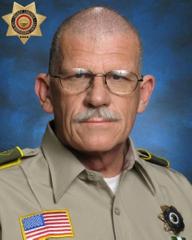 The San Bernardino County Sheriff's Department is mourning the death of one of their own tonight. Moments ago, Deputy Lawrence “Larry” Falce succumbed to injuries he sustained from the violent attack on Sunday, December 31, 2017.
The San Bernardino County Sheriff's Department is mourning the death of one of their own tonight. Moments ago, Deputy Lawrence “Larry” Falce succumbed to injuries he sustained from the violent attack on Sunday, December 31, 2017.
Larry is remembered as an honorable man, who began his career with the San Bernardino County Sheriff’s Department in 1981 as a deputy sheriff. Larry started his career working in corrections at the Glen Helen Rehabilitation Center and the Central Detention Center. The 36-year veteran worked patrol at Central Station for the past 32 years. Before joining our department, Larry served his country in the Army. He prided himself as being a lifelong public servant, who cared deeply about this profession.
Larry was loved by his peers and the community members he served. More importantly, he cared about so many people he called family. Larry is survived by his sister, Marjorie, and his girlfriend of many years, Deborah. He also leaves behind many extended loved ones.
The San Bernardino Police Department is conducting the criminal investigation. We will not be releasing or confirming the identity of the suspect at this time due to the active investigation. Anyone with information or questions related to the criminal investigation should contact the San Bernardino Police Department.
BMC Field Session(s) 2018
 Sunday, December 10, 2017 at 15:51
Sunday, December 10, 2017 at 15:51  Jeff Lehman
Jeff Lehman Those of you wishing to recertify for the Basic Mountaineering Course (BMC) please be aware of the following dates. Note: the course for first-time students is closed. This announcement concerns recertification participants only. The primary date is January 13, 14. If that is canceled, the backup is February 3, 4. If that too is canceled, the last-ditch effort is March 10, 11. The typical recertification participant would only show up on Sunday and be tested. There would be no instruction what-so-ever. However, you are all welcome to attend the entire course. In that case, you could receive instruction on Saturday. Only individuals who have pre-registered with Sonny Lawrence may attend. Please email slawrence AT sbsar DOT org.

